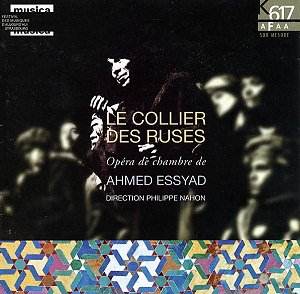 Composer: Bruno Walter
Composer: Bruno Walter
Works: Sonata for piano and violin; Karl Goldmark: Suite No. 1 in D major for violin and piano, Opus 11
Performers: Philippe Graffin (violin), Pascal Devoyon (piano)
Recording: Rec. 15-16 Jan 1999 (Walter), 23 June 2000 (Goldmark), Henry Wood Hall
Label: Hyperion CDA67220
The recording of Bruno Walter’s Sonata for piano and violin, alongside Karl Goldmark’s Suite No. 1, presents a fascinating juxtaposition of late Romantic musical expression, characterized by both compositional ethos and historical context. Walter, a prominent conductor turned composer, is often overshadowed by his illustrious conducting career, yet his Sonata, composed in the early 20th century, reveals a certain introspective quality that invites both appreciation and critique. In contrast, Goldmark’s Suite, a product of the mid-19th century, showcases a more direct and effervescent melodic charm, rooted in the tradition of the Austro-Germanic musical lineage.
Graffin and Devoyon’s interpretation of Walter’s Sonata is marked by a commendable technical precision, yet the emotional depth that one might expect from such a lengthy piece—over thirty minutes—remains elusive. The first movement, Allegro, while constructed with care, lacks thematic gravitas; the motifs introduced do not develop in a manner that captivates the listener’s imagination. The performers execute the intricate passages with clarity, but the absence of a distinct emotional arc renders the music somewhat pedestrian. The Adagio movement, intended as a lyrical respite, drifts into sentimentality without achieving true poignancy, leaving one to wonder whether Walter’s self-critique of his compositional prowess was warranted.
On the other hand, Goldmark’s Suite brings forth a refreshing vitality that stands in stark contrast to Walter’s more subdued expression. The opening movement, Allegro, is imbued with buoyant rhythms and engaging melodic lines, capturing the listener’s attention immediately. Devoyon’s vibrant piano textures complement Graffin’s soaring violin melodies beautifully, creating a dynamic interplay. The Scherzo is particularly noteworthy, showcasing an infectious energy and rhythmic drive that invites exuberance, while the following Larghetto offers a contrasting introspection, adeptly rendered by both artists.
The engineering and sound quality of this recording are nothing short of spectacular. Hyperion’s commitment to capturing the nuances of the performance is evident, with a rich ambiance that allows the instruments to resonate fully. The clarity of the recorded sound enhances the listener’s experience, allowing for a deeper appreciation of the intricate dialogue between violin and piano. The acoustic environment of Henry Wood Hall seems particularly well-suited to the intimate nature of these works, further enriching the aural experience.
Comparatively, one might look to earlier recordings of these works, particularly those featuring more established violinists and pianists, to gauge the interpretative choices made here. While Graffin and Devoyon’s rendition of Goldmark aligns well with traditional interpretations, Walter’s Sonata may benefit from a more adventurous approach that explores the emotional landscape with greater fervor.
The juxtaposition of Walter’s introspective yet somewhat insipid Sonata and Goldmark’s lively Suite provides an intriguing listening experience. While Graffin and Devoyon deliver technically proficient performances, the overall impact of Walter’s contribution feels muted amidst the more engaging character of Goldmark’s work. The recording stands as a valuable exploration of lesser-known repertoire, showcasing the talents of both composer and performers, yet it ultimately leaves the listener yearning for a more compelling narrative arc in Walter’s piece.



